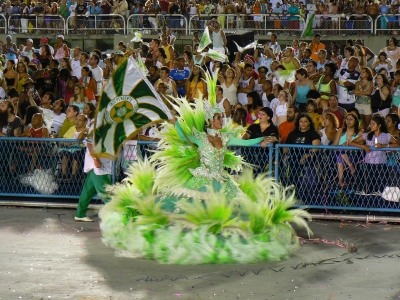Monday, 7 March 2011
It's Carnival, it's time for fun and also the great opportunitie of being someone else!
As it is adequate to this festivities, I decided to post something about the most famous carnivals in the world. The Brazilian one and the Carnival of Venice, wich I find just sublime.
Enjoy it!
Brazilian Carnival
 The Carnival of Brazil is an annual festival held forty-six days before Easter. Carnival celebrations are believed to have roots in the pagan festival of Saturnalia, which, adapted to Christianity, became a farewell to bad things in a season of religious discipline to practice repentance and prepare for Christ's death and resurrection.
The Carnival of Brazil is an annual festival held forty-six days before Easter. Carnival celebrations are believed to have roots in the pagan festival of Saturnalia, which, adapted to Christianity, became a farewell to bad things in a season of religious discipline to practice repentance and prepare for Christ's death and resurrection. Rhythm, participation, and costumes vary from one region of Brazil to another. In the southeastern cities of Rio de Janeiro and São Paulo, huge organized parades are led by samba schools. Those official parades are meant to be watched by the public, while minor parades ("blocos") allowing public participation can be found in other cities. The northeastern cities of Salvador, Porto Seguro and Recife have organized groups parading through streets, and public interacts directly with them. This carnival is heavily influenced by African-Brazilian culture.
Carnival is the most famous holiday in Brazil and has become an event of huge proportions. The country stops completely for almost a week and festivities are intense, day and night, mainly in coastal cities.

Carnival of Venice
The Carnival of Venice is an annual festival, held in Venice, Italy. The Carnival starts around two weeks before Ash Wednesday and ends on Shrove Tuesday (Fat Tuesday or Mardi Gras), the day before Ash Wednesday.
Carnival started as a time for celebration and expression throughout the classes, as wearing masks hid any form of identity between social classes. During the 1970s, the Italian government decided to bring back the history and culture of Venice, and sought to use the traditional Carnival as the centerpiece of their efforts. Today, approximately 30,000 visitors come to Venice each day for Carnivals.
Venetian masks can be made in leather or with the original glass technique. The original masks were rather simple in design and decoration and often had a symbolic and practical function. Nowadays, most of them are made with the application of gesso and gold leaf and are all hand-painted using natural feathers and gems to decorate.

Masks have always been a central feature of the Venetian carnival; traditionally people were allowed to wear them between the festival of Santo Stefano (St. Stephen's Day, December 26) and the start of the carnival season and midnight of Shrove Tuesday.
Raquel Moreira 12ºB





1 comentários:
dear Raquel
I hope you're having a nice holiday. I love carnival as it can be real madness. I danced a lot and today my hips are sore, but I'm happy. thanks a lot for sharing and for all your work
Love
prof. Lígia
Post a Comment